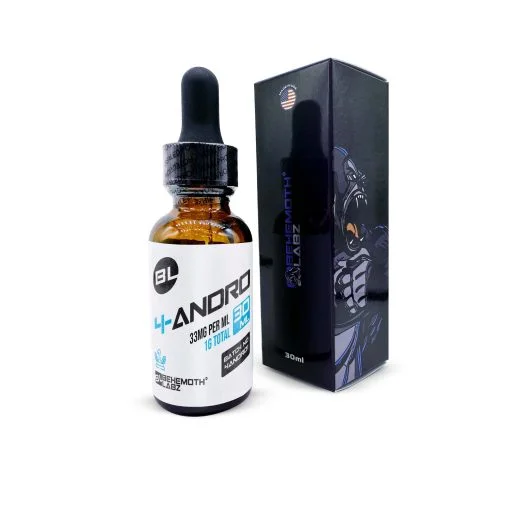Peptides
How Long Does PT-141 Stay In The System of Research Models
According to animal model studies, PT-141 remains active in the system for 6 to 72 hours. Some research models may experience their most potent effects within 6 to 12 hours. Over time, its impact and presence in the system may gradually disappear. This discussion suggests that the particles of PT-141 may be detectable for approximately 72 hours, or three days.
After three days, their presence is less likely to be detected within the system during clinical trials. This duration may also vary from subject to subject and is dependent on various internal and external factors. In the following paragraphs, we will discuss each factor in detail.
Factors Influencing The Elimination Time of PT-141 During Research
Several internal and external factors may influence the elimination time of PT-141 in research models. The presence and absence of these factors decide how long the PT 141 compound will last in the system. Here is the list of these factors. Let’s have a look at them!
Internal Factors:
- Biological Response of Research Models:
The biological response is the first internal factor that may influence the elimination time of PT-141 from research models. The biological response refers to the metabolic patterns of a research subject. With a fast metabolic pattern, a subject is most likely to eliminate PT 141 quickly or well before the actual time. With a slow metabolic pattern, the presence of PT 141 may last longer.
- Health Status:
Health status is another factor influencing the elimination time of PT 141 from research subjects. A research model in a healthy condition is likely to have a faster metabolic rate. The quicker metabolic rate may remove PT-141 well before the actual time. On the other hand, if a subject is in an unhealthy state, the metabolic rate will be slow. Thus, a slow metabolic rate will extend the presence of PT 141 in research models.
External Factors:
- Dosage Amount:
Dosage is the first external factor that influences the duration of PT 141 in the research models. With a heavy dose, the presence is likely to last for a more extended period. On the other hand, a regular dose will take anywhere from 6 hours to 72 hours to be fully absorbed into the system of a research model.
- Cycle Length:
Cycle length may also affect the duration of PT 141 in the system. An extended cycle length is likely evident in the research models used during laboratory trials. In the opposite case, the dosage is likely to be removed from the system within the approximate time.
How To Detect PT-141 Presence In The System
Scientists and researchers use various methods to detect the presence of PT-141 in research subjects during laboratory trials. The selection of the process depends on the nature and feasibility of the research. Let’s explain all the methods used to detect the presence of PT141 in the system:
Urine Method
Urine is a widely used method to detect the presence of PT 141 in the system. In this method, a urine sample from research models is taken in a closed environment in the laboratory. After that, the color, viscosity, and odor of the urine are checked to find the presence of the PT 141 compound.
Blood Sample Method
A blood sample is another widely used and recommended method for detecting the presence of PT 141 in the system. In this method, researchers take a blood sample from research models and then test it in the laboratory. In the blood sample, researchers look for the presence of the PT-141 compound.
Hair Follicle Method
The hair follicle is the least commonly used method in the laboratory for PT141 detection in the system. Particles of any compounds, after digestion, dissolve into the bloodstream. From there, these particles also get trapped in the hair keratin matrix. So, in the hair follicle test, the presence of the PT-141 compound is checked in the system.
Tips To Eliminate PT-141 From The System
Sometimes, researchers also want to eliminate the presence of PT-141 from the system, as they wish to initiate another research study. So, here are some techniques that can be used to eliminate PT141 from the system:
Hydration/More Water Intake
Increasing water intake by research models during laboratory trials may help eliminate PT-141 from the system. Through increased water intake, the system of research models will eliminate the particles of PT 141 through urine.
Better Sleep Cycle
Improving the sleep patterns of research models may naturally eliminate foreign agents, including the PT-141 compound, from the system.
Hepatic Support Diet
A hepatic-supporting diet can enhance detoxification in research models and also help eliminate foreign agents from the system. This diet improves hepatic function, which is responsible for detoxification in research models.
Final Thought
The PT-141 compound takes 72 hours to be eliminated from the research models’ systems during laboratory trials. Various factors–biological response of research models, dosage cycle, and health status of research subjects– may impact the elimination time of the PT 141 compound. In addition, urine method, blood sample, and hair follicle test methods are used to detect the presence of the PT-141 compound in the system. Apart from that, through hepatic support diet and increased water intake, the PT 141 compound may be eliminated well before the actual time.
Frequently Asked Questions (FAQs)
How long do the effects of PT 141 last in the system of research models?
According to animal model studies, the effects of PT-141 may last approximately 72 hours. This period may fluctuate for various reasons. For instance, the health status, metabolic pathways, and research environment may impact the lasting impacts of PT-141 during clinical trials.
Does PT-141 work for all research models?
Yes, PT141 may work for all research models. However, the research must adhere to established guidelines and protocols to minimize potential side effects.
What is the best place to buy PT-141 for laboratory research?
The best place to buy PT 141 is BehemothLabz. Because BehemothLabz not only sells products but also accompanies researchers to achieve their desired goals. Moreover, our products are particularly designed to meet your research needs and objectives. Additionally, our prices are reasonable, and our products can be delivered both nationally and internationally.
How long does PT-141 remain active in the system of research models?
According to preclinical studies, PT-141 remains active in research models for up to three days. After three days, the effects of PT-141 gradually disappear from the research subjects.
What are the standard methods used to detect the presence of PT-141 in the system?
The standard methods used to detect the effects and presence of PT 141 in research models during clinical trials are blood sampling techniques, urine tests, and hair follicle tests. The selection of any method depends on the nature of the research.











